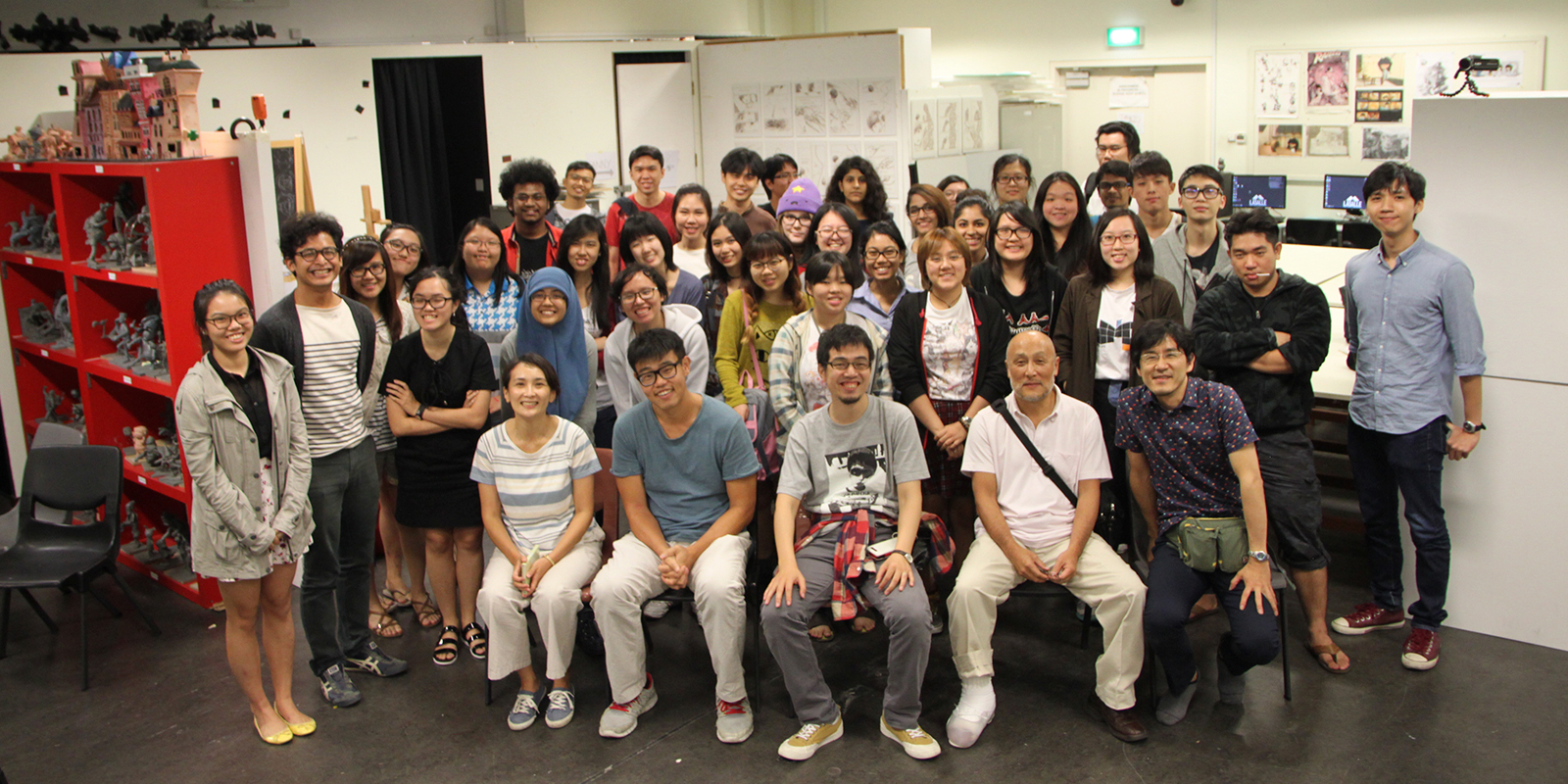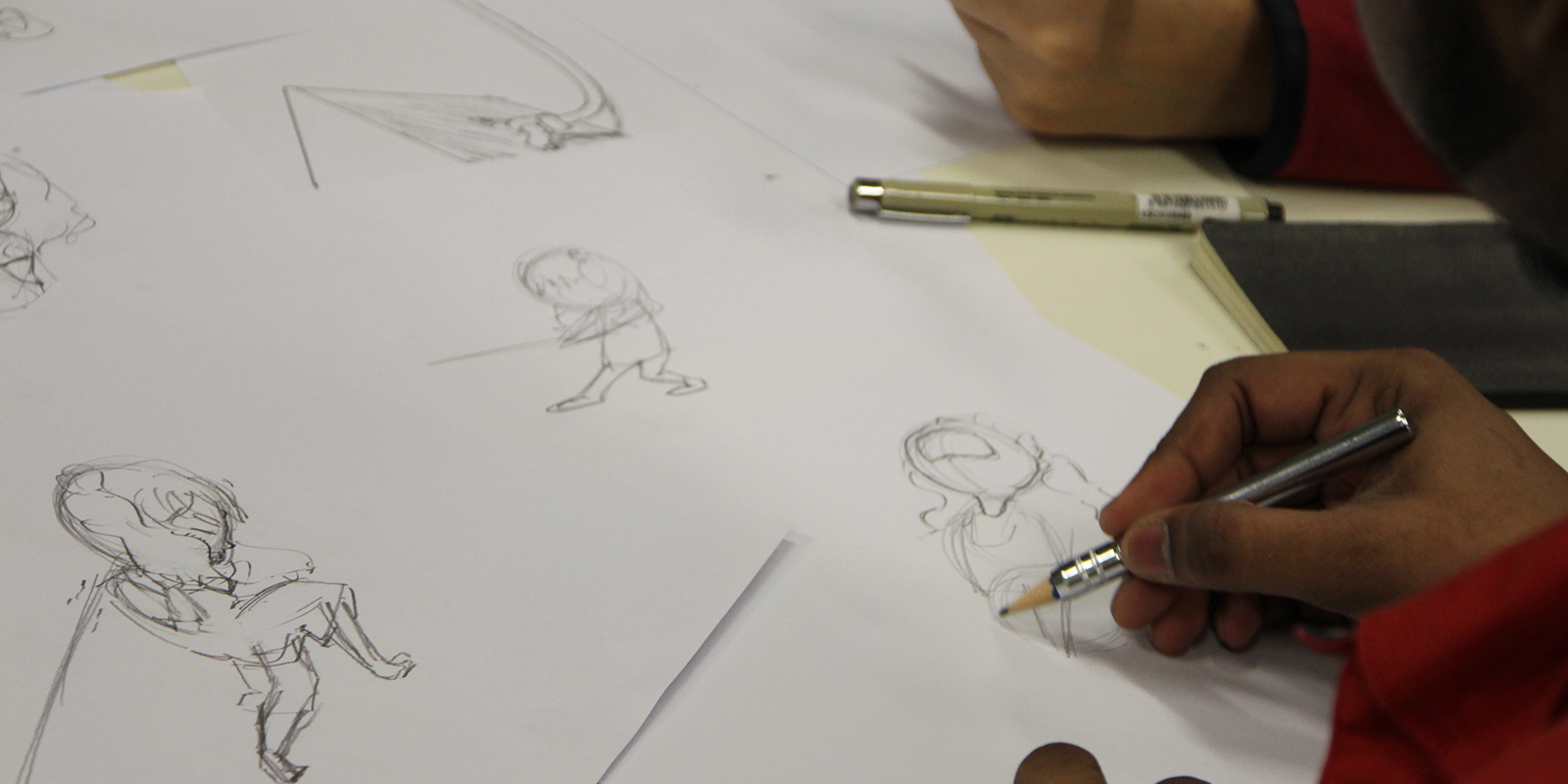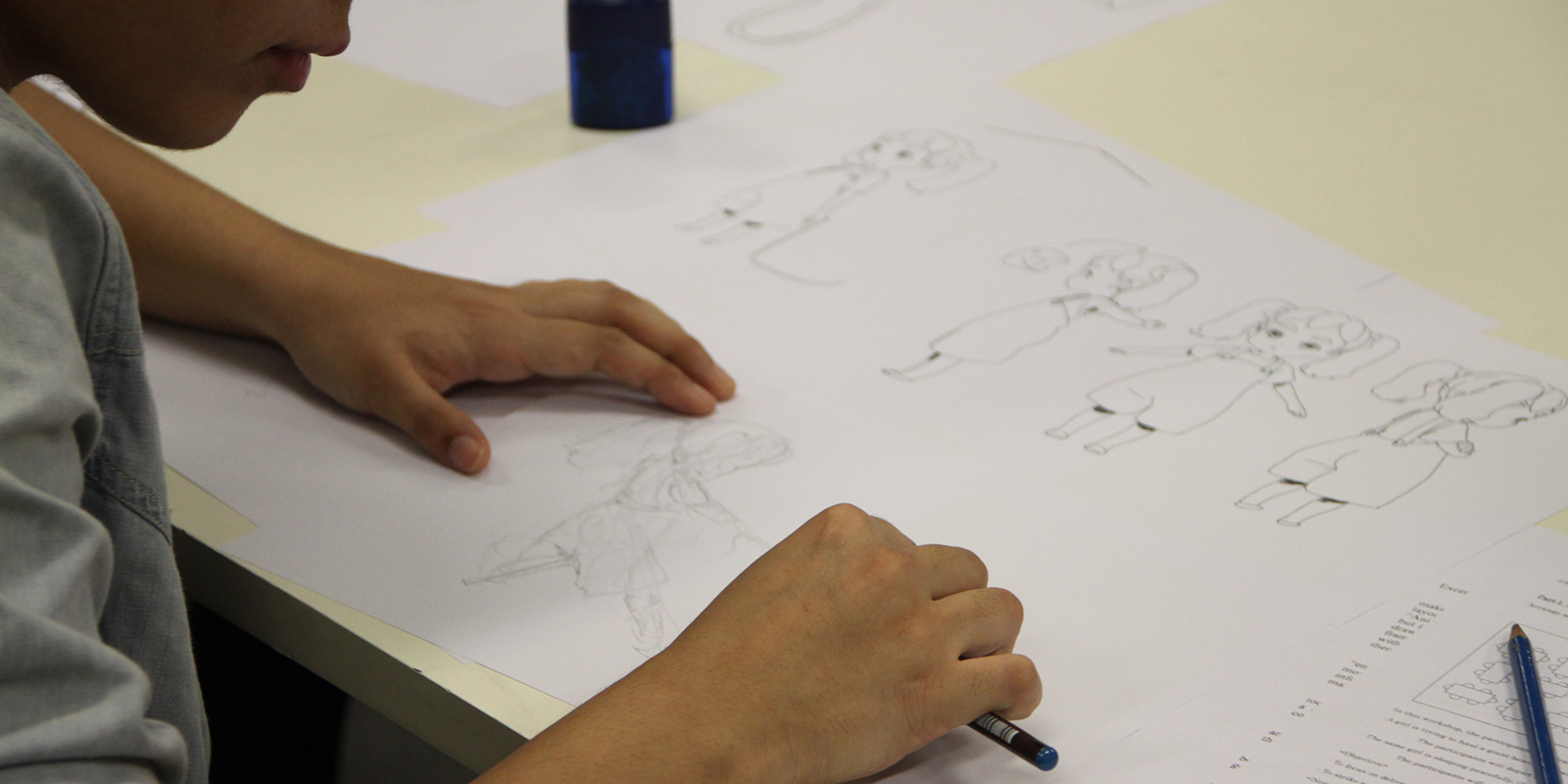Singapore Project (Animation)
Background and Purpose
As the spark for overseas young people to get interested at Japanese culture, there is not a few occasion to raise the viewing experience of anime. Comparing anime and manga, there is also pointed out that anime is the first entrance and later manga follows to stimulate their interest in foreign countries. As the example to learn about the situation of acceptance to anime in Singapore, there is an event called ANIME FESTIVAL ASIA (AFA) which has been held since 2008. It is an event to deliver the pop culture from Japan to Asian countries led by nongovernment organization. As expanded year after year, the event has been held in Indonesia, Malaysia and Thailand, and the number of visitors to the previous one in 2014 reached 145,000. The actual status of the event extends to product sales, cosplay, voice actor event, and furthermore Japanese comedians’ performance. Although it may not be appropriate to say the event exclusively for anime any longer, I would rather say this is also the characteristics of Japanese anime to have extensibility in media mix style as such. The trend of “export” of pop culture with Japanese anime in core this way can be projected to continue exploring in various styles, however, the target for those is persistently fan base. The way to connect with anime fans includes the producing action in a certain ex- tent which can been seen such as derivative work and fan-subtitled. Therefore, they cannot be positioned as mere consumers, either way the main objectives in the trend of ‘export” can be the expansion of consumer layer. On the contrary, this program targets for the youth who studies animation at prestige arts colleges who is not only an anime fan as a consumer but has a potential to become a primary producer of animation in future. Of course many of them has a side as a fan who likes Japanese anime, but they are the young people who aim to eventually succeed as a professional producer. In this program, we aimed to deepen their understanding as a step up from the interest that they always had toward Japanese anime works to learn about the creators of anime work, and furthermore, to motivate them to understand the high skills that Japanese animators have, the philosophy to support that and the strong passion to master the skills. And we would like to provide the formative experience to make them strongly feel that they want to work with Japanese producers when the participants become professional producers in future. This program, so to speak, can be also said as an attempt to make future partners for Japan to continue creating animation works. Throughout this program, we aimed to sow seed of international co-production and technical corporation in animation field and to produce the spread of international cultural ex- change including not only consumer layer but also producer layer in future.
Implementation Structure
| Japanese side | |
|---|---|
| Lecturer | Ryo-timo (Animator / Character Designer / Animation Director) |
| Director | Koji Takeuchi (Animation Producer) |
| Taruto Fuyama (Professor, Tokyo University of the Arts) | |
| Assistant Director | Yuko Nagoya (Freelance) |
| Program producer | Mitsuko Okamoto (Professor, Tokyo University of the Arts) |
| Program manager / Interpreter | Asako Eguchi (Assistant Professor, Tokyo University of the Arts) |
| Planning / Operation | Graduate School of Film and New Media, Tokyo University of the Arts |
| General management | UNIJAPAN |
| Program Supervisor | Takenari Maeda (International Promotion Group & Director) |
| Program Manager | Mayu Honda (International Promotion Group) |
| シンガポール側 | |
|---|---|
| 現地コーディネーター | Hideho Urata (Cinematographer / Lecturer, LASSALE College of the Arts) |
| 参加校 | LASSALE College of the Arts |
| 現地協力者 | Chris Shaw(LASSALE College of the Arts/Animation Program Leader) |
| Hillary Yeo(LASSALE College of the Arts/Lecturer) | |
| Liew Hong Ze(Business Development Manager, CACANi) | |
Lecturer’s Profile
-
Ryo-timo (Animator / Character designer / Animation Director) ()
Outline of the Program
《Program Name》
‘Animation Master Class’
《Schedule》
Saturday, 28th November, 2015
《Venue》
LASALLE College of the Arts (Lecture room on the fifth floor)
《Time Table》
10:00-11:30 Workshop: Drawing a Moment of Action Expressively 11:30-12:30 Film Screening:“Birdy the Mighty Decode” and “Yozakura Quartet: Hana no Uta” 12:30-13:30 Lunch 13:30-16:30 Lecture: “To Convey Something” and Professional Ability of Animators 16:30-17:30 Question-and-Answer Session 18:00-20:00 Wrap up Party
《Participants》
Students: 35 persons from LASSALE College of the Arts (Faculty of Media Arts) Observers: 3 persons including In-house Animators from CACANi (see 1-4-4 of this section)
《Languages》
Japanese and English (consecutive interpretation)
Details of the Program Contents
《Workshop: Drawing a Moment of Action Expressively》
In the master class of the animation part, it was our aim for the students to learn as much as possible not only from classroom lectures but also through hands-on practice and assignments. The morning kicked off with an ice breaking session, followed by a workshop for studying the art of drawing a moment of action through pantomime exercises and perceptive imagination. At the beginning of the workshop, the lecturer, Mr. Ryosuke Sawa (hereinafter Ryo-timo) presented a lecture explaining the specialty and challenges of Japanese animation. Japanese animation has tended to use “motionless picture” and as the result of the history of this trend “to keep it still”, now many animators are not yet skilled at drawing a moment of action. The lecturer explained this circumstances and suggested that it would be quite important to review how to draw actions for Japanese animation. After the lecture, a workshop on experimenting with pantomime was carried out to practice concepts of image and movement. Mr. Ryo-timo demonstrated an excellent pantomime performance, and the students joined him in various pantomime exercises to practice body movement and expression. The session on practicing pantomime was a fitting introduction to the next workshop where participants moved into drawing a moment of action. The participants learned that in drawing animation, it is important to practice the same skills exercised during the pantomime workshop. During the workshop of drawing moments, a picture (see examples below) was distributed to each participant. The participants were given two assignments: 1) complete two drawings of the girl pulling the stone by practicing the skills learned during the pantomime exercise and showing the heavy weight of the stone and the effort of the girl pulling the weight. The students were given 30 minutes to finish the first assignment, then 2) draw a moment of a girl who is napping peacefully on the grass in the middle of the afternoon. The key is to draw the moment of the girl being truly relaxing and attempting to convey a feeling and expression of peaceful relax- ation. During both assignments, the participants diligently worked on their drawings. Some even left their seats, moving their bodies in shapes to help them visualize how they wanted to convey their drawings.
《Animation Screening》
Two animation pieces Mr. Ryo-timo was involved were screened:
- “Birdy the Mighty Decode” (1st phase): 1st episode from TV series,2008 (Ryo-timo participated as the animation director / character designer.)
- “Yozakura Quartet: Hana no Uta”: 1st episode from TV series,2013 (Ryo-timo participated as the director and character )
《Lecture: "To Convey Something” and Professional Ability of Animators》
All of the drawing assignments from the morning session were digitally uploaded by a software called “KOMA KOMA” developed by director Fuyama. All of the drawings were projected on the screen and Mr. Ryo-timo did a case study of the drawings. The lecturer commended each of the participants’ works and explained how to improve their level of “expression conveyed” by making edits on the participants’ drawings projected on a whiteboard. Each of the workshop participants could then understand their strengths and where they could improve. The workshop and lectures were not designed to loudly appeal the expression unique to Japanese animation. The contents were actually an attempt to foster a basic understanding of that the basis of expression is common to all cultures. We believe that the participants also understood that if they understand the basic way of thinking how to pursue “observation” and “articulate expression”, the improvement of techniques will naturally follow and they can be world-class professionals.
《Question-and-Answer Session》
During the question and answer session, the participants enthusiastically asked Mr. Ryo- timo a variety of questions. One of the questions was how Mr. Ryo-timo managed to cope with hardships and prob- lems he had faced during his career. He explained that unlike other animators, his career took off when he was scouted and “discovered” on the Internet. During the early days of his career, he admitted that there were many hardships and mistakes he made. But he said, “I always asked myself a fundamental question: how do I personally feel about this? This way of thinking is similar to my theme “Think for Yourself and Express It”. The idea for this theme probably originally came from my past experiences. Similarly, when someone says to us, “you are doing it wrong”, we may have to seek out ways to persuade them to understand our point of view.” That was another key takeaway from the assignments: being able to convey “transmittable expression”. Hearing Mr. Ryo-timo’s stories based on his personal experiences was a highlight of the workshop for many participants. Later, in answering a question about the production process of Japanese animation, he gave a detailed explanation by drawing the workflow, demonstrating his skills in communicating ideas through both 2D and 3D techniques. His presentation also touched on critical viewpoints, explaining that the Japanese animation industry has maintained very high quality thanks to a few excellent animation directors. But as a result, there is often little room for growth as younger animators. Then Mr. Takeuchi, an experienced producer with overseas experience added his thoughts to support Mr. Ryo-timo’s viewpoint. Even questions about the salary and work hours of animators and directors, as well as questions about gender equality in the industry were answered. The questions revealed deep interest in working for the Japanese animation industry. Mr. Ryo-timo displayed the average salary and work hours which seemed to both surprise and shock participants. But Mr. Takeuchi explained why the salaries of animators are comparatively low and the differences between full employment and working freelance. In addition, foreigners must also consider the visa issues of working in a studio in Japan. Mr. Ryo-timo and Mr. Takeuchi also carefully answered each of those questions and they so enthusiastically explained from the current situation and headaches of the Japanese animation industry to how digital tools should be utilized to solve the problems, the session seemed more like a full lecture of interesting content rather than just a Q&A session. Both Mr. Ryo-timo as an animator and Mr. Takeuchi, a producer joined the discussion with different perspectives on many of the subjects. The participants were able to benefit from the wealth of unbiased knowledge and experience in understanding the realities of today’s Japanese animation industry.
《Wrap up Party 》
After the end of class, a social gathering was held for students in the university lounge, with participants and lecturers enjoying the opportunity to meet, learn and socialize in a casual setting.
Conclusions
Singapore offers a high level of education both in the film and animation fields among ASEAN countries, and as a result, many foreign students from other countries come to study here. The leadership at the universities is mostly foreigners from Europe or North American and their curriculums lean towards a Western style. Because their knowledge of the Japanese animation is limited, we can expect the lectures on this topic to be lacking in sufficiently stimulating young hearts. To address this issue, I would prefer teaching basic expressions of animation common to both western styles, which the students may already be familiar with, and complementing that with Japanese expressions that appeal to specific Japanese anime. After understanding the commonalities, we can then teach them the differences. We also do not just explain through lectures but hands-on workshops allow them to understand through the experience of drawing and practicing. A fundamental and practical approach promises great success as evidenced by the num- ber of favorable responses from the students and the local staff. Also, having the combination of lecturer (Mr. Ryo-timo) and director (Mr. Takeuchi) to answer questions from their respec- tive point of views was also a valuable way to learn about Japanese animation. As a point of reflection, the method of assignment questionnaires during the workshop did not always go smoothly and we should consider new ways to improve the format. Lastly, if there is the most important key to make this program successful, it should be to develop a trusting relationship and obtain full cooperation with the educational institutions and the companies who will locally support the program. This would be a common issue required not only in Singapore but also in any other countries.




